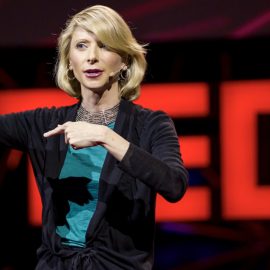

This article is an excerpt from the Shortform book guide to "The Rational Male" by Rollo Tomassi. Shortform has the world's best summaries and analyses of books you should be reading.
Like this article? Sign up for a free trial here .
When do women reach their sexual prime? Are older women more sexually prolific?
According to Rollo Tomassi, the author of The Rational Male, women perpetuate the lie that they reach their sexual prime when they’re older and more mature. This is because women’s sexual strategy is to find a man who would be best suited to protect and financially support them and their children, and they need ample time for that.
Keep reading to learn the truth about women’s sexual prime, according to Tomassi.
The Sexual Strategies Underpinning the Feminine Agenda
According to Rollo Tomassi, women and men are biologically programmed to execute two distinct sexual strategies. On the one hand, men are compelled to have sex with as many women as they can to ensure the continuation of their genetic line. On the other hand, women want to find the best possible mate—one who’ll pass down the most advantageous physical traits to her offspring, and who’ll serve as a great protector and provider for the long term.
To ensure she fulfills her sexual strategy, a woman is genetically predisposed to seek out the highest-status and most socially dominant man she can get—one with sufficient money, career success, and social influence. She constantly scans for the best-qualified man she can attract and never stops.
According to Tomassi, even when a woman commits to a long-term relationship, she will always be on the lookout for an upgrade. Her man might fit the bill today but fail to measure up tomorrow. For example, he could fail to achieve a job promotion or pay raise that she sees as critical for his (and therefore her) advancement. Then, if she finds someone better, she will leave her man without a second thought.
Women’s Sexual Prime in Life
Tomassi says women promote the lie that older women are sexually desirable and exciting. As Tomassi explains, this lie about a woman’s sexual prime supports women’s mating strategy. Women’s sexual desires drive them to find the best-qualified, highest-status man they can get. They need ample time and opportunity to do that.
The lie that women reach their sexual prime later in life gives women the buffer they need to vet men as potential providers. According to Tomassi, here’s how this works: Early in life, when women are more fertile and physically appealing, they seek out and can “hook” men whose contribution to offspring is purely genetic—guys who are fit, muscular, and attractive. But, they know they will eventually need a man who has sufficient money, connections, and status to protect and support them and their children. So, later in life, women shift their focus away from men’s looks and instead prioritize long-term security, seeking out men with ample money, connections, and status.
When these secure, successful men believe the lie that older women reach their sexual peak later in life, they’re more vulnerable to making bad relationship decisions. A man will convince himself that an older woman who seems—and supposedly is—supremely sexually vital, eager, and experienced is somehow a better option than a younger, more fertile, and more sexually desirable woman.
Contrary to popular belief, Tomassi says, women’s prime sexual years are between ages 18 and 25. This is when they’re most attractive and desirable as mating partners, determined by biology. In contrast, men’s prime sexual years are between ages 30 and 36, determined by a combination of their physical attractiveness, level of social dominance, and professional achievements. Tomassi commends that whereas women’s sexual desirability is short-lived and declines rapidly with age, men’s sexual desirability is more sustained and often increases as they age.
Clarifying Women’s Sexual Prime and How It Influences Their Relationship Decisions
Whereas Tomassi defines someone’s sexual prime as the time when they’re most attractive and desirable as a mating partner, doctors and psychologists define sexual prime as the period in someone’s life when they are most capable of having frequent, high-quality sex—unrelated to their reproductive capability.
Recent research suggests women reach their sexual peak between 27 and 45 years old, while men peak in their early 20s. Hormones levels for both men and women decline throughout their reproductive years, which tends to lower libido. However, people of all ages can have satisfying sex, and research confirms a vast range of sex drives and sexual activity across ages. Many people, women in particular, report having better sex when they’re older. This may be due to having more experience, more skilled partners, and more comfortable communicating their needs.
So, how does the discrepancy between men’s and women’s sex drives influence women’s relationship preferences? Research shows that some older women seek out younger men because they want partners who can keep up with their high sex drives. In one study, women dating younger men gave three reasons for their sexual desires to seek out younger men:
- They believed younger men were more equipped to satisfy them sexually—the men would want more sex and would last longer during sex.
- They felt more comfortable being assertive about their sexual needs and desires, assuming younger men would appreciate them taking a more active role.
- They thought younger men would be keener to prioritize their partner’s sexual pleasure than their own—anticipating that younger men would try harder to impress women with their skills than older men.
Are Humans Programmed to Want Children?
Tomassi claims that the purpose of women’s sexual prime being between 18 and 25 is because they’re hardwired to want children. He seems to view reproduction as a natural, inherited preference that is impervious to cultural influences (although he does seemingly recognize that culture shapes behavior—after all, his book itself is designed to influence men’s behavior). Let’s examine what scientific research says about that claim.
In terms of biological influences, humans do seem to have a genetic predisposition to pursue sex (an urge which varies widely between individuals in its frequency and intensity). However, the predisposed desire for sexual activity does not equate to a desire to produce offspring. Many women and men engage in intercourse purely for pleasure, and much of that sexual activity does not result in offspring.
That said, women’s “maternal instinct” may be hardwired. This built-in compulsion for women to nurture and protect their offspring is likely an evolutionary adaptation that helps ensure the continuation of life. As for cultural influences, research shows that these also impact whether people want children. In one study of American adults between ages 18 and 49, 44% of respondents said they don’t want children largely because of a bleak economic and social outlook.

———End of Preview———
Like what you just read? Read the rest of the world's best book summary and analysis of Rollo Tomassi's "The Rational Male" at Shortform .
Here's what you'll find in our full The Rational Male summary :
- How women use a feminine agenda to manipulate men
- Why sex should never be a transactional arrangement
- Why men don't need long-term relationships






